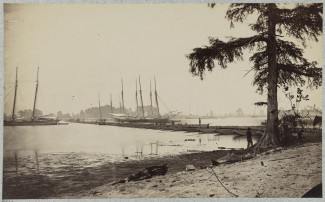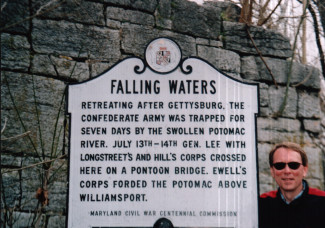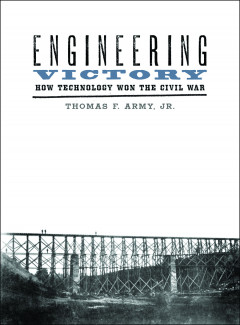
Johns Hopkins UniversityEst. 1876
America’s First Research University
The Army's Journey

Thomas F. Army, Jr., is an adjunct assistant professor of history at Quinebaug Valley Community College. His latest project, Engineering Victory: How Technology Won the Civil War is available now.
In researching my book, Engineering Victory: How Technology Won the Civil War, I visited several Civil War sites connected to military engineering. Although not sure what we would find on the trip, (my daughter Priscilla accompanied me), since, for example, Brown's Ferry at Chattanooga and the Bruinsburg crossing point (Vicksburg) are both on private property, we set out looking for something unique. You know that hidden place in the woods where a Civil War marker identifies a location where 150 years ago Union or Confederate engineers built a bridge or a corduroy road.
Driving somewhere south of Richmond early one morning we noticed a notation on our map marked "Grant's Crossing." Was this the spot where Grant's army crossed the James River on a 2,100-foot pontoon bridge built in eighteen hours by men of the 50th New York Volunteer Engineers? The site was only about 20 miles out of our way, so after consulting with my co-pilot, we decided to take the excursion.

The trip was on back roads and after driving approximately forty minutes we spotted one of those brown National Park Service signs, which read "Grant's Crossing, 5 Miles." What a thrill! We found it. We found a spot where one of the greatest feats of Civil War engineering took place. Even my then fourteen-year-old daughter was excited.
After five miles, the road came to a dead end. In front of us stood two twenty-foot columns on either side of what looked to be private property. It was not a National Park entrance. Knowing, however, we were near the James River, I decided (my daughter was against it) to drive onto the property and take our chances. After about ten minutes of driving through a maze of cornfields on dirt roads we spotted a construction trailer. By now Priscilla was nervous and wanted to leave. I said we at least had to knock on the door. A young man answered and asked what we were looking for on the property. I said we were searching for Grant's Crossing, and he happily volunteered to take us there.

We drove through more fields until we reached the very wide James River. Hiking for another half mile, he finally stopped and told us we had arrived at Grant's Crossing. As Priscilla and I looked over the spot, our guide set up a tripod and a 35mm camera. He asked us to take a look. He had placed a slide of an Alexander Gardner photograph over the lense. There was the 2,100 foot pontoon bridge over the James, and off to the right of the photo was a cypress tree on the riverbank. He pulled the slide away and there was the cypress tree, the same one that appeared in the Gardner photograph. Not only were we at Grant's Crossing, but also we were probably standing close to where Gardner took the picture.

It turned out that our young guide worked for the Flowerdew Hundred Foundation, an organization designed to preserve this land for archeological explorations. The Flowerdew Hundred Plantation dated back to 1618/1619 and included remains of old forts and Native American encampments. Unfortunately, several years ago the foundation closed and the property is now a private residence.
I discovered a number of fascinating things while doing research for my book. Discovering Grant's Crossing, however, was one of the most exciting and memorable.



